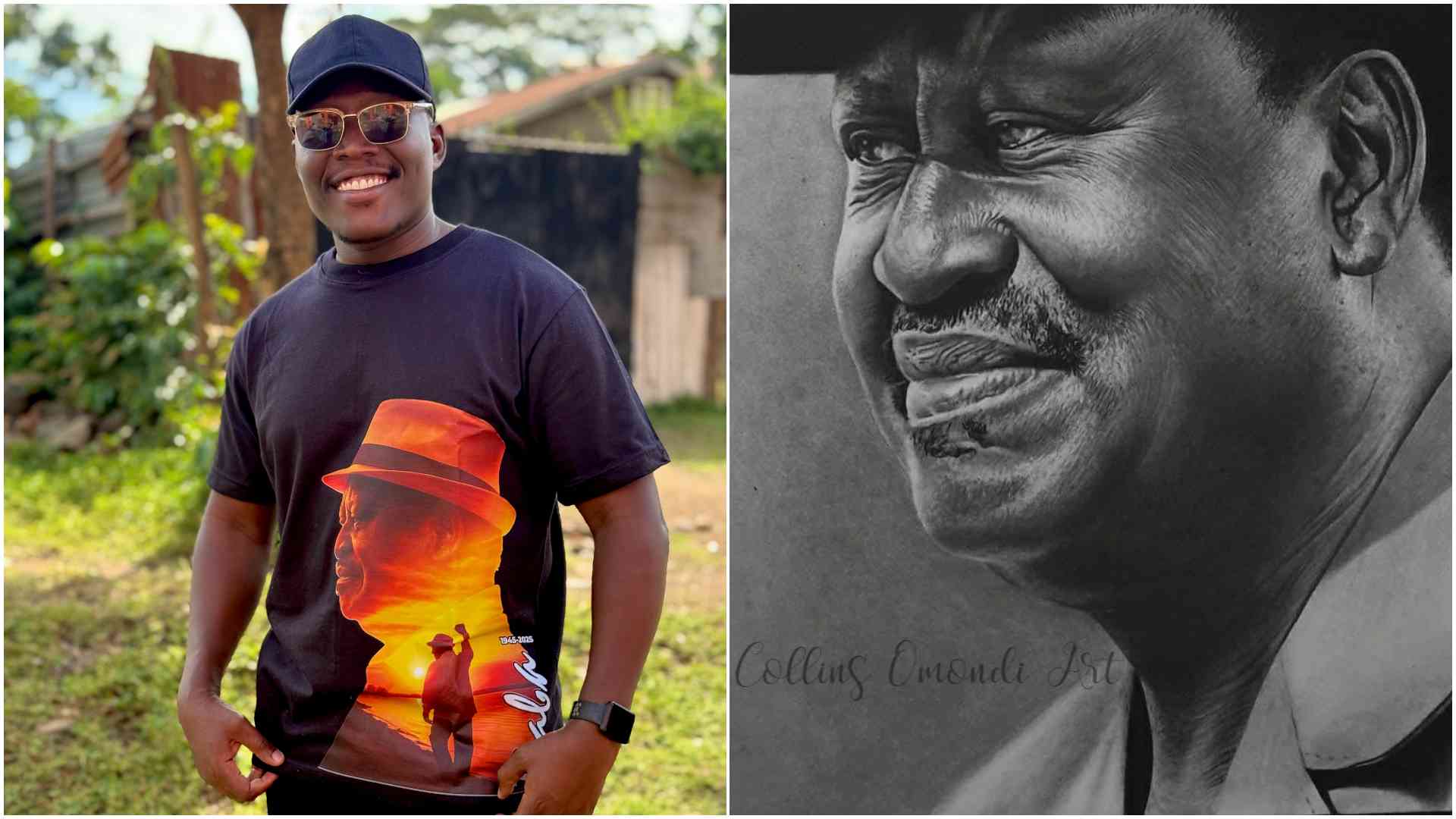Visual artist Collins Omondi’s phone went buzzing with a flood of messages and calls and thousands of followers on social media. His digital art tribute to the late former Prime Minister Raila Odinga C.G.H., created in the wake of his death, had gone viral across the country.
This isn’t the first time for the artist to go viral. In 2014, a pencil portrait of former president Uhuru Kenyatta in military regalia, then a Raila and Barack Obama portrait in 2015, and a Steve Harvey portrait in 2020.
“Everyone has a God-given. This is what following your gift looks like, just incredible,” Steve Harvey commented about it.
Collins, widely known for his pencil drawings, opted for digital art because he didn’t have time to create a traditional piece since Raila was going to be buried within 72 hours.
That urgency formed a piece that captured the collective grief and pushed Collins, based in Kisumu, once again into the national spotlight.
The piece was a side portrait of the late Raila donned in his famous hat, and beside it is an image of him holding his fist up to signify his liberation legacy, and he is at a lake.
“I chose to work digitally so I could express my grief and pay tribute quickly while the country’s emotions were still raw. I was shocked and glad that the artwork resonated with people. It reflected what the country was feeling,” he says.
Since the artwork went viral, Collin’s phone hasn’t stopped buzzing. So many people and organisations have reached out that he has lost count.
This visibility has increased his sales, and new opportunities that he isn’t ready to divulge have come knocking. This virality has validated his creativity and the power of art to speak to human emotion.
But the challenge he faced was the lack of credit that he initially got. As his work spread across social media, he noticed that many posts shared without his watermark had his name attached.
“Sometimes it might be an innocent omission. Someone finds an artwork online, and maybe the watermark was cropped out. Other times it’s deliberate because people want to gain traction using another person’s work or even make money off it,” he explains.
He acknowledges that even though he made the artwork as a personal tribute, the main goal was achieved, and the country appreciated it, seeing it circulating without artist credit was discouraging. He believes that many people mistake giving credit as being selfish when that’s not the case.
Crediting, he says, gives visibility to artists and opens them up to global markets, which boosts the economy. Recognition helps artists sustain themselves and stay motivated to keep creating.
“Recognition is the least you can offer. Coming up with an artistic idea isn’t easy; there’s a creative process behind every piece. A motivated artist is an aggressively creative artist,” he says.
To protect their work, Collins encourages fellow artists to use watermarks, engage copyright and trademark authorities, and, if necessary, pursue legal action against infringement.
Nevertheless, the viral moment reaffirmed art as a powerful voice for the masses by capturing moods, steering conversations, and building sustainable careers.
“I’m planning a solo exhibition, mentorship programmes, and art workshops across the country, and creating more works,” he says.


